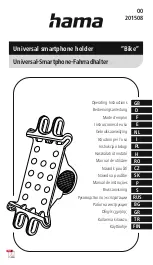
Condumax CLS15D/16D/21D
Repair
Hauser
21
L
WARNING
Thiocarbamide
Harmful if swallowed. Limited evidence of carcinogenicity. Possible risk of harm to the unborn
child. Dangerous for the environment with long-term effects.
‣
Wear protective goggles, protective gloves and appropriate protective clothing.
‣
Avoid all contact with the eyes, mouth and skin.
‣
Avoid releases into the environment.
Clean away fouling on the sensor as follows depending on the type of fouling:
1. Oily and greasy films:
Clean with grease remover, e.g. alcohol, as well as hot water and (alkaline) agents
containing surfactants (e.g. dishwashing detergent).
2. Lime, cyanide and metal hydroxide buildup and low solubility organic buildup:
Dissolve buildup with diluted hydrochloric acid (3 %) and then rinse thoroughly with
plenty of clear water.
3. Sulfidic buildup (from flue gas desulfurization or sewage treatment plants):
Use a mixture of hydrochloric acid (3 %) and thiocarbamide (commercially available)
and then rinse thoroughly with plenty of clear water.
4. Buildup containing proteins (e.g. food industry):
Use a mixture of hydrochloric acid (0.5 %) and pepsin (commercially available) and then
rinse thoroughly with plenty of clear water.
5. Readily soluble biological buildup:
Rinse with pressurized water.
After cleaning or regeneration, you must rinse the sensor thoroughly with water and
then recalibrate it.
8
Repair
8.1
Sealing ring replacement and recalibration (CLS16D only)
Intact seals are a prerequisite for safe and reliable measurements. The seal should be replaced
at regular intervals to guarantee maximum sensor operational safety and hygiene.
Practical repair intervals can only be determined by the user as they depend greatly on the
operating conditions, such as:
• Type and temperature of the product
• Type and temperature of the cleaning agent
• Number of cleanings
• Number of sterilizations
• Operating environment












































